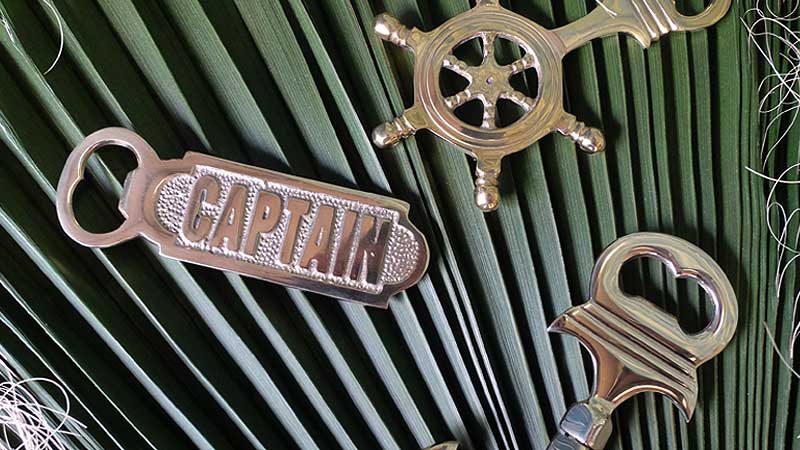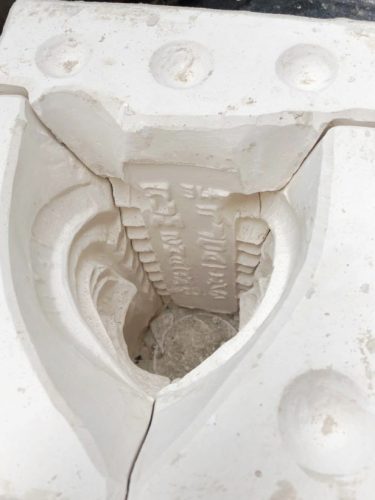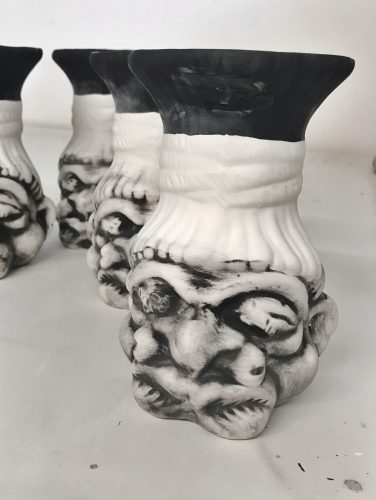When it comes to creating a captivating Tiki Bar atmosphere, it’s all about the details. From bamboo accents to tiki´s, every element plays a crucial role in transporting guests to a tropical oasis. One such element that can infuse authenticity and cultural richness into your space is Tapa Cloth.
Tapa Cloth, also known as tapa or ngatu, is a traditional Polynesian textile made from the inner bark of certain trees, such as the paper mulberry, it is softened and pounded into sheets of cloth, then bound together using natural starches such as root crop. The tapa making tradition is found all across Oceania, but due to the labour-intense nature of its production, the craft has largely ceased in many countries. Tonga, a Polynesian kingdom in the South Pacific, boasts a rich heritage of tapa cloth production, with designs often reflecting intricate patterns and symbolic motifs.
Tapa cloth can simply be used as a decorative accent throughout your Tiki Bar. You can drape it over bamboo or rattan furniture, hang it on walls as tapestries, or use it as tablecloths or runners. These textiles instantly add warmth, texture, and a sense of history to your space but if you want to take it to the next level then you will want to know how to use Tapa cloth to create your perfect Polynesian hideaway.
You will need to start by selecting the right piece of Tapa Cloth for the type for your project. You can upholster cushions or pillows, craft lampshades, or even use Tapa cloth as a wall covering. These personalized touches add character and charm to your Tiki Bar while incorporating elements of Polynesian culture.
Each piece of Tapa cloth is made to scale, designs usually follow a measurement such as feet and each section is designed with this scale in mind. At the edge of each piece of Tapa cloth the scale is usually drawn out and whilst it is not necessarily a part of the pattern it can be incorporated into your framing of the tapa cloth or cut off to be used in another way. The scale is quite often a plainer colour with little marking, and this can make create lampshades that show us the texture of the cloth without being to dark from the design itself.
Being hand made from tree bark Tapa cloth can have an uneven appearance with some natural knots, holes or frays visible, this is part of the authentic nature of this cloth but is something you may have to work around depending on the project.
The hand painted designs can sometimes also be very thick so each piece really is unique and this needs to be considered when using Tapa cloth.
We sell both pieces or Tapa cloth and larger designs that can be bought by the Square foot so there is a range of designs and sizes to choose from that will suit all budgets.
Once you have chosen your design then you can set to crafting your project. Tapa cloth is a layered cloth that can be sewn to make cushions, upholstery and even clothes. Smaller off cuts ae perfect for framing or making cushions and table matts and we even save the scraps for making jewellery and decorative accessories.
One very impactful way of using tapa cloth is as a wall covering to create a feature wall. Tapa cloth can be used in the same way as wallpaper. If you think you may wish to preserve your tapa cloth for future use elsewhere then we would recommend adhering the tapa cloth to a board, something like a 6mm piece of ply that can be screwed to the wall and therefore removed at a later date. The edges can then be wrapped around the board to create a neat finish but if you prefer to adhere it to the wall then you will need to use a bonding adhesive that you can pour into a roller tray and apply to the wall and to the back side of the tapa cloth. To tidy up any edges we would recommend using a split piece of bamboo or Carved wooden trim like a picture or dado rail.
Vintage Tongan Tapa Cloth requires delicate handling to preserve its integrity. So avoid direct sunlight and excessive moisture, as these can cause fading and deterioration.
Incorporating vintage Tongan Tapa Cloth into your Tiki Bar not only enhances its aesthetic appeal but also pays homage to the rich cultural heritage of the Pacific Islands. By thoughtfully integrating these authentic elements, you can create an immersive tropical experience that transports your guests to a bygone era of Polynesian charm and hospitality. Cheers to embracing the spirit of aloha in every detail of your Tiki Bar!



























